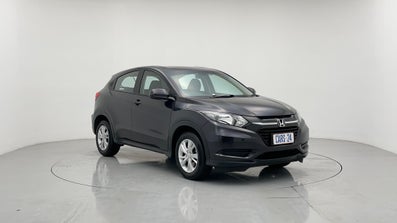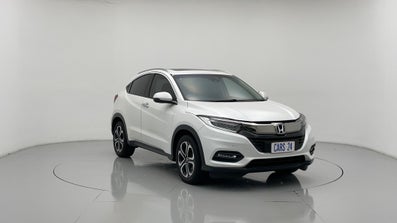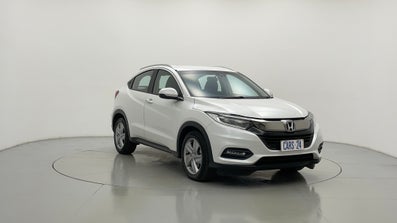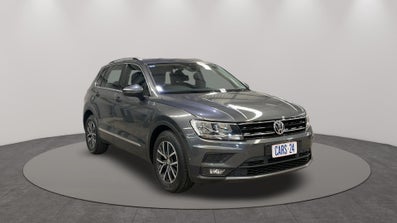FILTERS
Price/Finance
Body Type
Year
KMs Driven
Transmission
Fuel Type
Features
Drivetrain
Seats
Colour
Imperfections and Safety
Delivery Time
You’ve reached the end
Selected Filters
Clear all filters
honda hr-v
10 Used Honda HR-V Cars in Australia
Honda has a rich history of creating all sort of things with engines, from cars and bikes to generators and power equipment such as lawnmowers. It"s that diversity that makes the company such a giant in the world of engine manufacturing; Honda claims to build more engines than any other company.


Car loan eligibility in 2 min

Best interest rates>>
No impact on credit score

12X faster loans
Used cars by Model

Got a car to sell? Get a free valuation instantly.
Buy with confidence
Loan eligibility in 2 mins
7-Day return & 100% refund
Quality service guarantee
Best value for money
3-Months Warranty
900+ Cars ready and waiting
CARS24 Platinum Cover™
Protect your car against mechanical issues with up to 3 years of
extended warranty
Similar cars you may like
Happy Purchases
Frequently Asked Questions
What is the starting price of a used Honda HR-V car?
10 used Honda HR-V cars are available with prices starting from $18,490.
What body types are available for 2nd hand Honda HR-V cars?
Honda HR-V cars are available in SUV body type for sale in Australia.
How many second hand Honda HR-V cars are available?
10 certified second hand Honda HR-V cars are available for sale in Australia.
Can I buy preowned Honda HR-V cars online at Cars24 in Australia?
You can buy preowned Honda HR-V cars in Australia from Cars24. Visit our website, book the car of your choice & get it delivered to your home.
Browse Used Cars In Australia
Browse Used Cars by Popular Models :
Used Honda CR-V cars in Australia |Used Honda Civic cars in Australia |Used Honda HR-V cars in Australia |Used Honda Jazz cars in Australia |Used Honda Odyssey cars in AustraliaBrowse Used Cars by Popular Make :
Used Audi cars in Australia |Used BMW cars in Australia |Used Fiat cars in Australia |Used Ford cars in Australia |Used GWM cars in Australia |Used Holden cars in Australia |Used Honda cars in Australia |Used Hyundai cars in Australia |Used Isuzu cars in Australia |Used Jaguar cars in Australia |Used Jeep cars in Australia |Used Kia cars in Australia |Used LDV cars in Australia |Used Land Rover cars in Australia |Used Lexus cars in Australia |Used MG cars in Australia |Used Mazda cars in Australia |Used Mercedes-amg cars in Australia |Used Mercedes-benz cars in Australia |Used Mitsubishi cars in Australia |Used Nissan cars in Australia |Used Range Rover cars in Australia |Used SKODA cars in Australia |Used Subaru cars in Australia |Used Suzuki cars in Australia |Used Toyota cars in Australia |Used Volkswagen cars in AustraliaCouldn’t find the perfect car?
Let one of our friendly team know - we might have the perfect car waiting backstage.
Honda HR-V Car Buying Guide
When the Honda HR-V came back for good in 2014 it arrived only with an automatic transmission. That"s indicative of the direction the market was heading.
But the HR-V doesn’t get any regular auto but a CVT, or continuously variable transmission. Honda has long used CVTs as a way to extract the most out of modest engines. With no fixed gear ratios, the CVT instead adapts to the driving conditions to vary engine revs accordingly.
It’s a neat system that blends nicely with the 1.8-litre engine for perky performance.
The HR-V also uses a familiar Honda naming strategy whereby the entry-level model is known as the VTi, the mid-grade as the VTi-S and the luxury-focused range topper as the VTi-L.
Whereas some SUVs provide the option of an all-wheel drive system, the HR-V doesn’t.
That gives you an idea of how Honda envisaged it being used. It’s not an adventure machine but a sensibly-sized SUV that does its best work around town – but one that also doesn’t shy away from a country road cruise.
Size is one thing the HR-V has on its side. It’s classified as a compact SUV but the body has more passenger and luggage space than many of its rivals.
Honda was slow to adopt active driver assistance systems – such as lane departure warning and automatic high beams – on its models and with the HR-V they were often optional. VTi-S and VTi-L variants come with low speed auto braking, but more advanced systems tend to be optional extras.
That’s a rare omission in an otherwise generous list of standard gear.
All get alloy wheels, Bluetooth connectivity and climate control air-conditioning while the VTi-S adds smart key entry, rain-sensing wipers and a side-facing camera that switches on when you activate the left indicator.
VTi-L models also pick up heated seats, a sunroof, leather trim and an electric front driver’s seat.
All of which adds up to a sassy compact SUV that’s well built and cleverly thought-out.

Contact Us!





